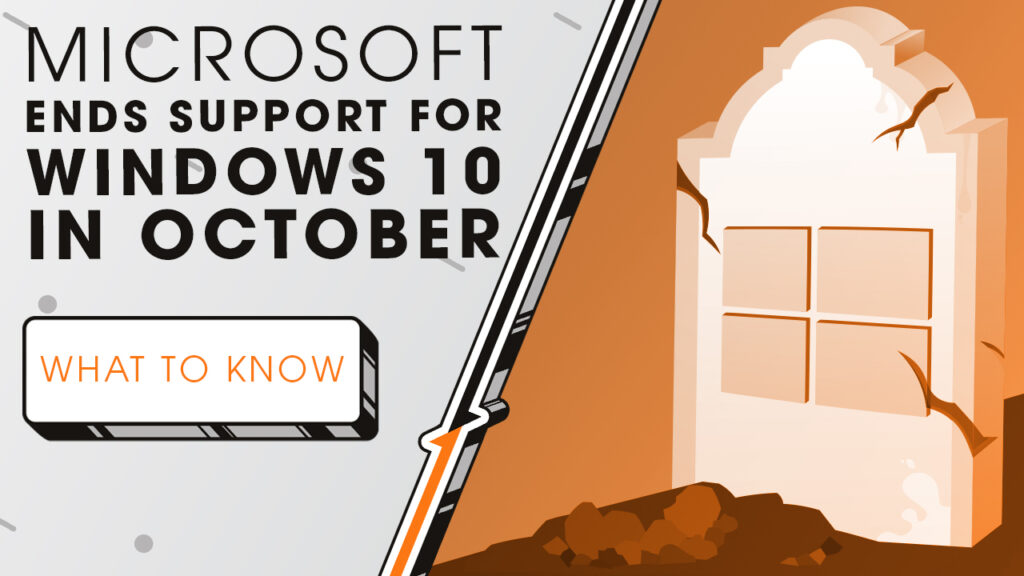Microsoft Ends Windows 10 Support in October | Sync Up

Windows 10 reaches the end of the road on October 14th as Microsoft releases its final update for the operating system. We’ll explain what this means for those still running Windows 10, and what options you have moving forward as we sit down and sync up with Rocket IT’s weekly technology update.
In this episode, you’ll hear more about:
- When Microsoft is pulling the plug on Windows 10.
- What happens once updates stop rolling out.
- Options for keeping older machines protected a little longer.
- Why some industries can’t afford to delay the switch.
- How to check if your PC is ready for Windows 11.
- The smarter way to handle upgrades across an entire company.
Video Transcript
Microsoft is sending out one last reminder. In less than 30 days, on October 14th, support for Windows 10 officially ends. That means the monthly update in October will be the last one this operating system ever receives. After that, there will be no more bug fixes, no more feature updates, and, most importantly, no more security patches.
And that’s where the real concern comes in. Without security updates, Windows 10 machines will become increasingly vulnerable to cyberattacks. Hackers know when support for an operating system ends, and they take advantage of known flaws.
Organizations that continue running Windows 10 could not only face higher security risks, but also compliance problems. For organizations in regulated industries, like healthcare, finance, or retail, running unsupported systems can mean falling out of line with standards such as HIPAA, PCI, or SOC2.
Now, this doesn’t mean your computer will suddenly stop working on October 15th. Windows 10 will still boot up, and you’ll still be able to use your applications. The difference is that from that point forward, it will be an aging system with no official protection or technical assistance behind it.
So, what options do you have if your device can’t upgrade to Windows 11? Microsoft is offering something called the Extended Security Updates program. This lets Windows 10 users continue receiving critical security updates for a limited time. For home users, it costs about thirty dollars per year. For businesses, the program runs sixty-one dollars per device in the first year, and can be renewed annually for up to three years. Virtual machines and Windows 10 devices that access Windows 11 through Windows 365 are also eligible to keep receiving security updates at no extra cost.
There’s another option for organizations with specialized hardware, like medical or industrial equipment, that can’t easily move forward. That’s where Microsoft’s Long-Term Servicing Channel comes into play. LTSC versions of Windows are designed for stability over the long haul, and some of them will keep receiving updates years past the October 2025 deadline.
If you’re not sure whether your computer can handle Windows 11, checking is simple. Just go into Settings, select Update & Security, and click Windows Update. Microsoft also offers the PC Health Check app, which tells you right away if your system meets the requirements.
All of these options are helpful in the short term, but the reality is that they’re only buying time. The logical next step for most users is to transition to Windows 11. The real challenge is how you make that move, especially if you’re responsible for dozens or even hundreds of PCs. Rocket IT helps teams plan and execute company-wide upgrades, ensuring devices are properly backed up, compatible, and secure before the transition begins. For assistance, reach out using the link in this video’s description, and don’t forget to hit subscribe and tap the bell to catch next week’s episode of Sync Up.
Related Posts
Subscribe to Rocket IT's Newsletter
Stay up to date on trending technology news and important updates.

Find out if Rocket IT is the right partner for your team
Claim a free consultation with a technology expert.










